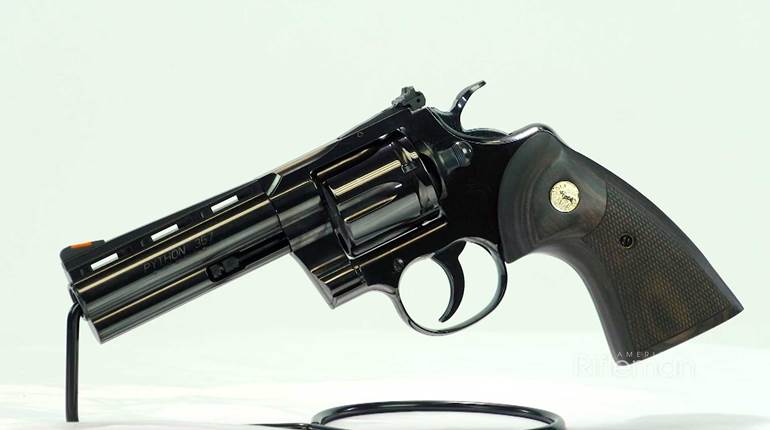
Q: I have been given the following two revolvers. The first is a .44-cal. Colt Model 1860, serial number 17780, with matching numbers on all parts including the wedge and stocks. It appears to have a four-screw frame for attaching a shoulder stock, and all the markings are clear and visible. The second is a Colt Model 1860, serial number 94038, and it has matching numbers on all parts except for the cylinder, which has 3907 on it. It has inspector’s marks on the left side of the grip. I would appreciate any information you could give me on these guns such as when they were manufactured, their rarity, desirability, and any other comments you might care to make.
A: The only way to obtain specific shipping information about your revolvers would be to request factory letters on them from the Colt Archives, 2 Talcott Road, West Hartford, CT 06110 (the cost for a letter on 1860 Armys in this serial number range is $300 each). However, we can provide you some information. From your description, number 94038 sounds like a standard U.S. Army contract revolver that was probably shipped from the factory in February 1863. The Army purchased 128,057 of these revolvers through contracts with Colt and obtained a few thousand others through other means. So they are not rare but, nonetheless, they are still good collector arms. These were the primary-issue revolver for the Union during the Civil War and were highly valued by the soldiers who used them.
While we cannot tell you what unit used your revolver, others in its general serial number range were issued to the 1st Maryland and 2nd Michigan Cavalry regiments. The fact that the cylinder does not match would significantly detract from its value to most collectors, perhaps by as much as 25 to 50 percent. Your best means of establishing its approximate worth would be to compare it to others that have been sold on the Internet, at such sites as gunbroker.com, or to those for sale by major auction houses.
Number 17780 may be more interesting and would, perhaps, warrant the expense of obtaining a factory letter. Many of the revolvers in this serial number range were among 1,000 pistols with attachable shoulder stocks that were sold to the U.S. Army on March 1, 1862. Of the 1,000, approximately 900 were issued to the 11th New York Cavalry, also known as “Scott’s Nine Hundred.” This regiment spent much of its service in the Washington, D.C., and the Northern Virginia area. All of the examples from the 1,000 pistols that I have seen have a “0” above or below their serial numbers. Colt used this marking to segregate revolvers intended for a specific purpose, such as being fitted with shoulder stocks, from those being submitted to the Army inspectors.
Colt also used the mark for those revolvers that had been rejected by the Army inspectors when Colt was refurbishing them for sale on the civilian market. Ironically, due to the urgent need for arms, the Army wound up buying most of the guns its inspectors had earlier rejected. You did not state whether your revolver had the “0” marking mentioned here, but if it does and does not have any Army inspector markings (on each side of the barrel near the breech, on the side of the cylinder in the cylinder scene area and also near the nipples, behind the trigger guard bow, and on the backstrap behind the hammer) it is probably one of the stocked pistols. If it does have the “0” and one or more inspector stamps (usually a single letter) it is almost certainly a contract reject and will probably also have a punch mark on the frame in the shoulder-stock milling cut of the recoil shield. I hope you find this information helpful.
—Charles Pate







































